Creature comforts are the key to well-being and longevity when living out of a car. Past multi-week road trips had left my husband and I exhausted, so as we planned for a yearlong motor adventure across North America, we focused on bringing the comforts of home into nature. A tricked-out Sprinter van would have been the homiest option, but not having $50,000 under our mattress, we retrofitted our Nissan Xterra and became first-time homeowners. We christened it “Tupperware World,” a nod to the Tetris-style stack of boxes filling the interior.
And now, having spent 8 full months in our home on wheels, it’s safe to say we know a thing or two about the best gear for car-life.
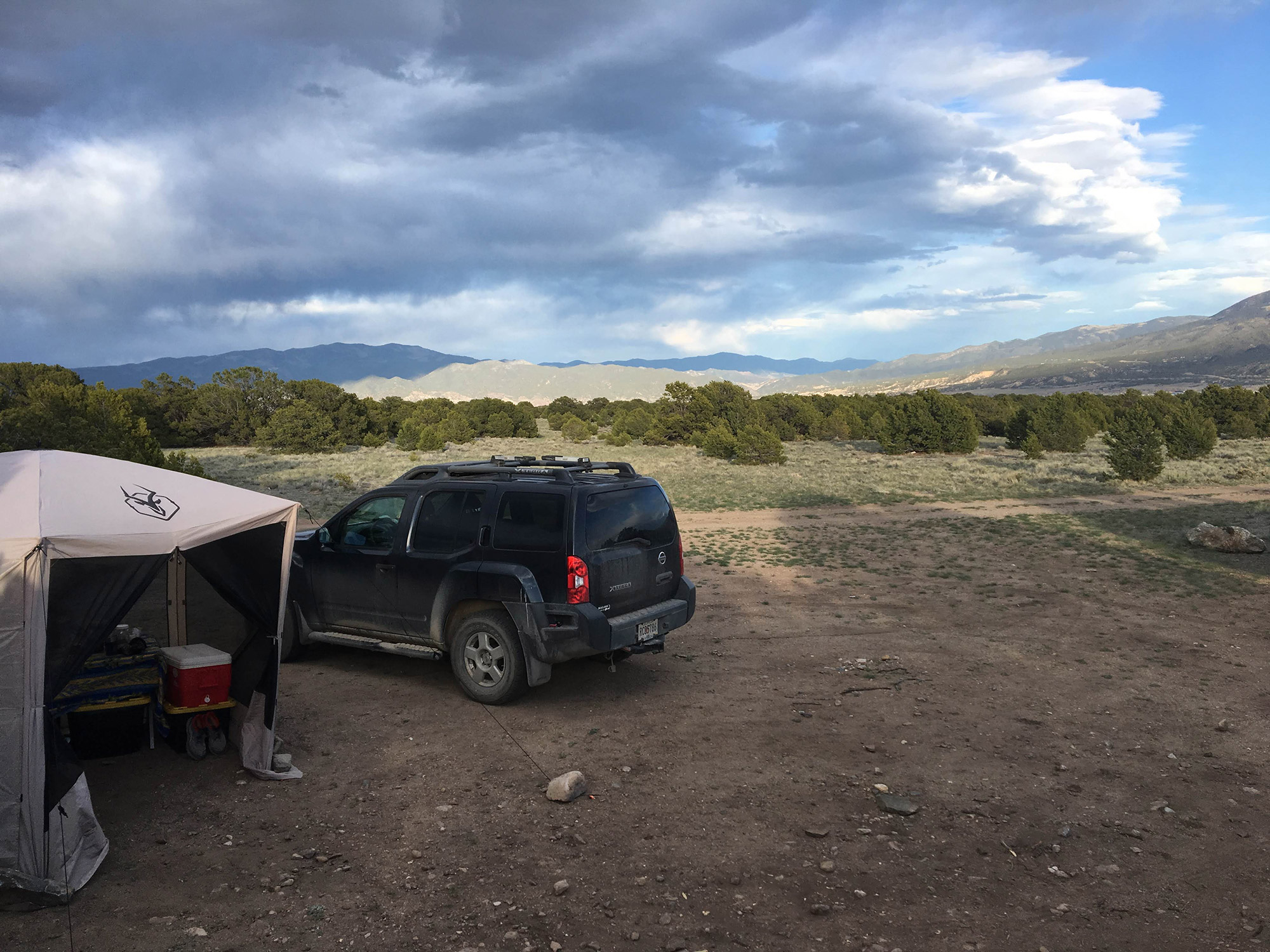
Multi-Purpose Room
Living out of your car is a euphemism for living outside. While the vehicle enables your nomadic lifestyle, the valley, overlook, or beach where you park it is “home.” When home is buggy, crowded, or rainy, you need a place to escape.
The solution: Wherever we park it, up goes a screen room. It’s kitted out with multi-purpose furniture, suiting our needs whether we’re cooking, shooting the breeze, or working. It’s important to choose a screen room that protects from sun, rain, and insects, like the MountainsmithShelter House. Complete the basic layout with a table and chair, like the Eureka Camp Tableand the Travelchair Easy Rider Camping Chair. Be a little extra, and liven up the space with portable speaker like the Goal ZeroRock Out 2 Portable Speaker.
One of the best pieces of gear we’ve bought in years is the MPOWERD Luci Solar String Lights, which provide ambient light hanging from the “rafters” of our screen room. Extending short winter days and lighting up the night during summer camp-outs, they make the space warm and homey. For lighting outside of the tent, I rely on the Petzl ReactikHeadlamp.
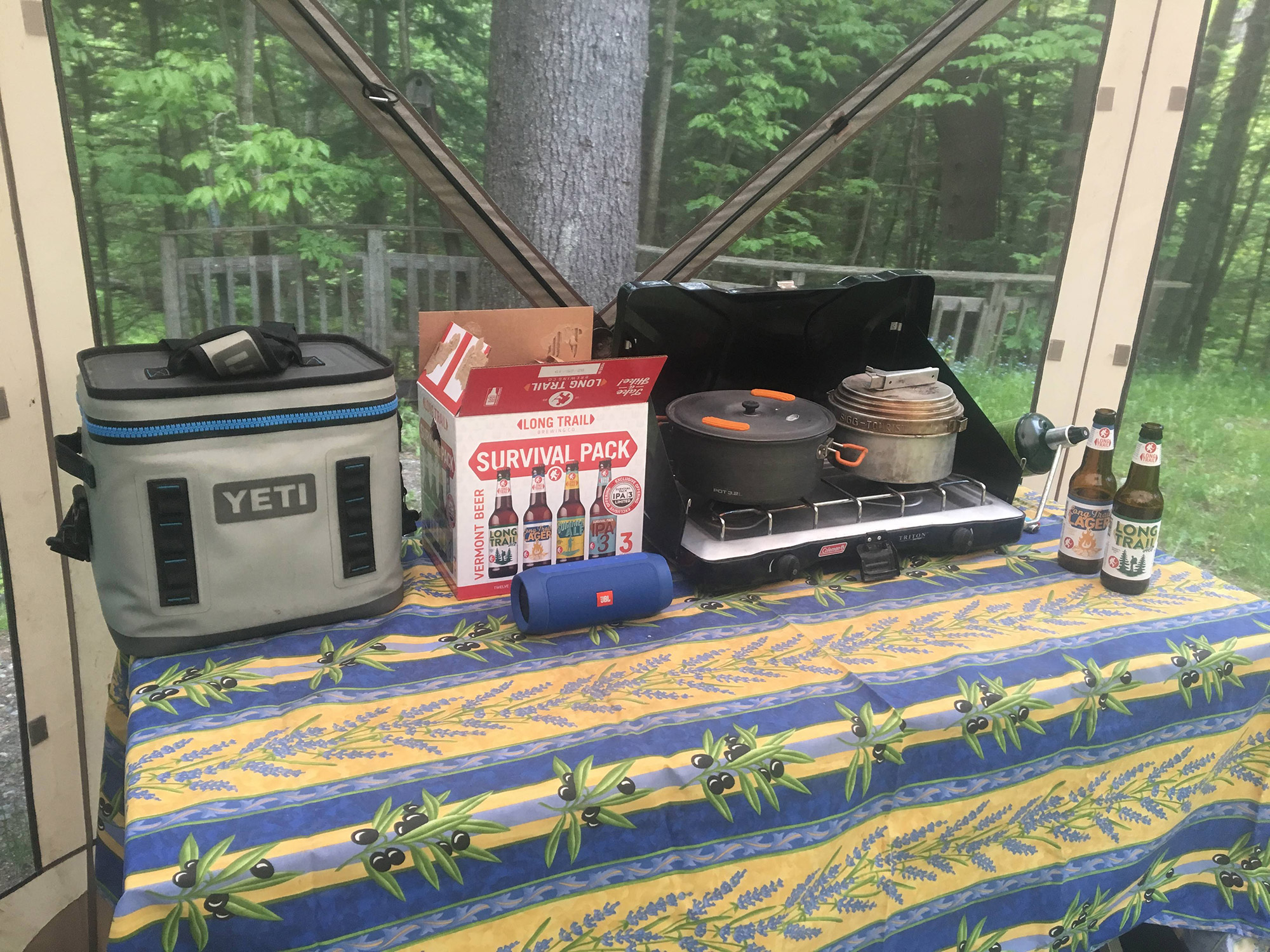
Outdoor Kitchen
Granola bars and Chef Boyardi may work for a night or two, but for me, having a kitchen on the road was a must. When we were young and stupid, my husband and I used our backpacking stove during extended car camping trips, which made cooking uncomfortable before we even began. If you plan to live in your car, do yourself a favor and outfit a portable kitchen.
Most outdoor kitchen gear is the same as what you’d find indoors, however, there are a few exceptions. Whet your appetite with cooking gear like the Primus Profile Stove, the MSR Quick 2 Pot Set, and the LMF Titanium Spork. My husband has owned this spork since before we met in 2012, so believe me, it’s bombproof. And while we avoid buying food that requires refrigeration, the Yeti Hopper Flip 8keeps our small supply of perishables fresh.
Most nights we camp at primitive sites, making water a scare resource. Fortunately, you can buy a few specialty pieces that make meal clean-up efficient and earth friendly. We use Sea to Summit’s 10-liter Kitchen Sinkand biodegradable Wilderness Wash. A refillable water jug, like the Reliance Fold-A-Carrier, provides enough water for 1 to 2 days of primitive camping.
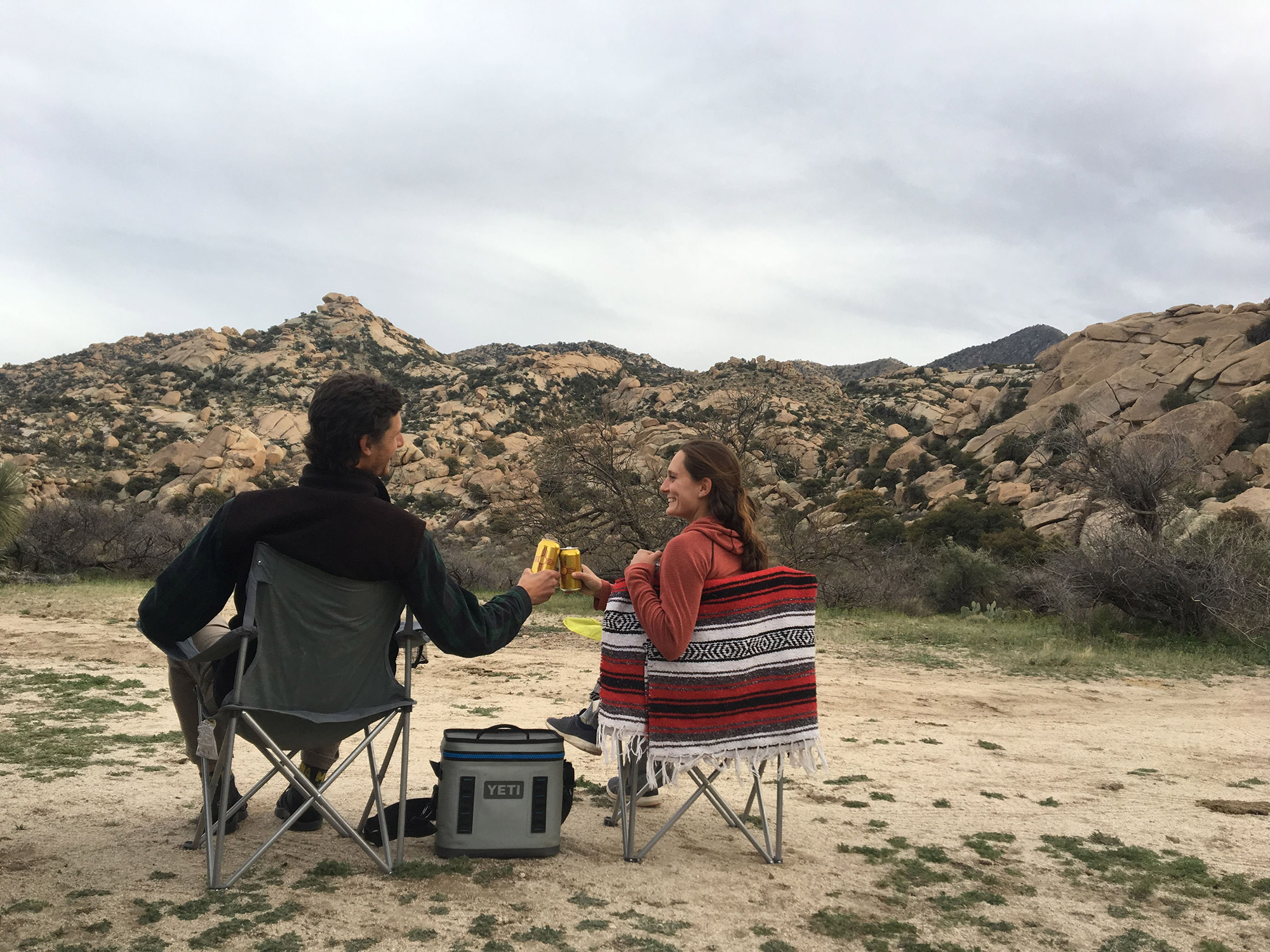
Mobile Office
Search the term “digital nomad” if you’ve ever wondered how people afford to travel for months on end. We mostly work in libraries and local coffee shops because they have internet and power, things that our car does not provide. We’ve met a lot of people this way, a perk to a life that can be lonesome at times.
To be honest though, I envy the van lifers who have portable power sources, such as theGoal ZeroYeti 150 Portable Power Station. Maybe on our next road trip?
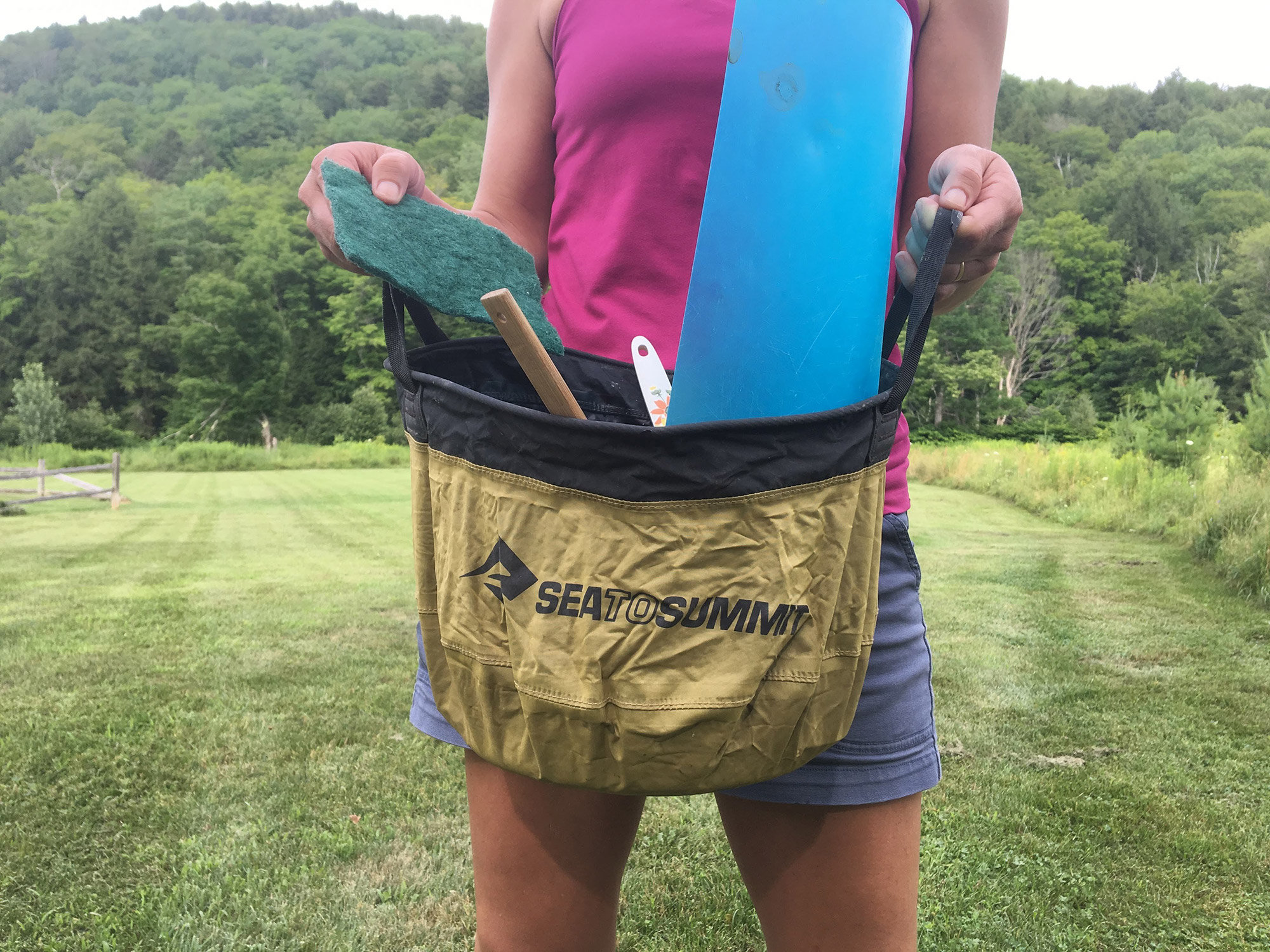
Hygiene
Traveling on a budget requires “boondocking,” or camping at free, primitive sites. It’s a cheap way to travel, but unless you’re Pig-Pen, you’ll need a few pieces of gear to keep clean.
People ask all the time how we shower, to which we respond, “Does jumping in a river count?” When rivers are scarce, we use a solar shower like the Sea to Summit Pocket Shower, which has enough water to rinse two people once. Otherwise the refillable water jug mentioned under the “Outdoor Kitchen” section provides what we need for brushing teeth, washing hands, and other campsite chores.
And what about those campsites without toilets? When not required to pack it out, you’ll need a trowel like the GSI Outdoors Cathole Trowelfor burying poop and toilet paper. FollowLeave No Trace Principle #3to scout the perfect cathole location.
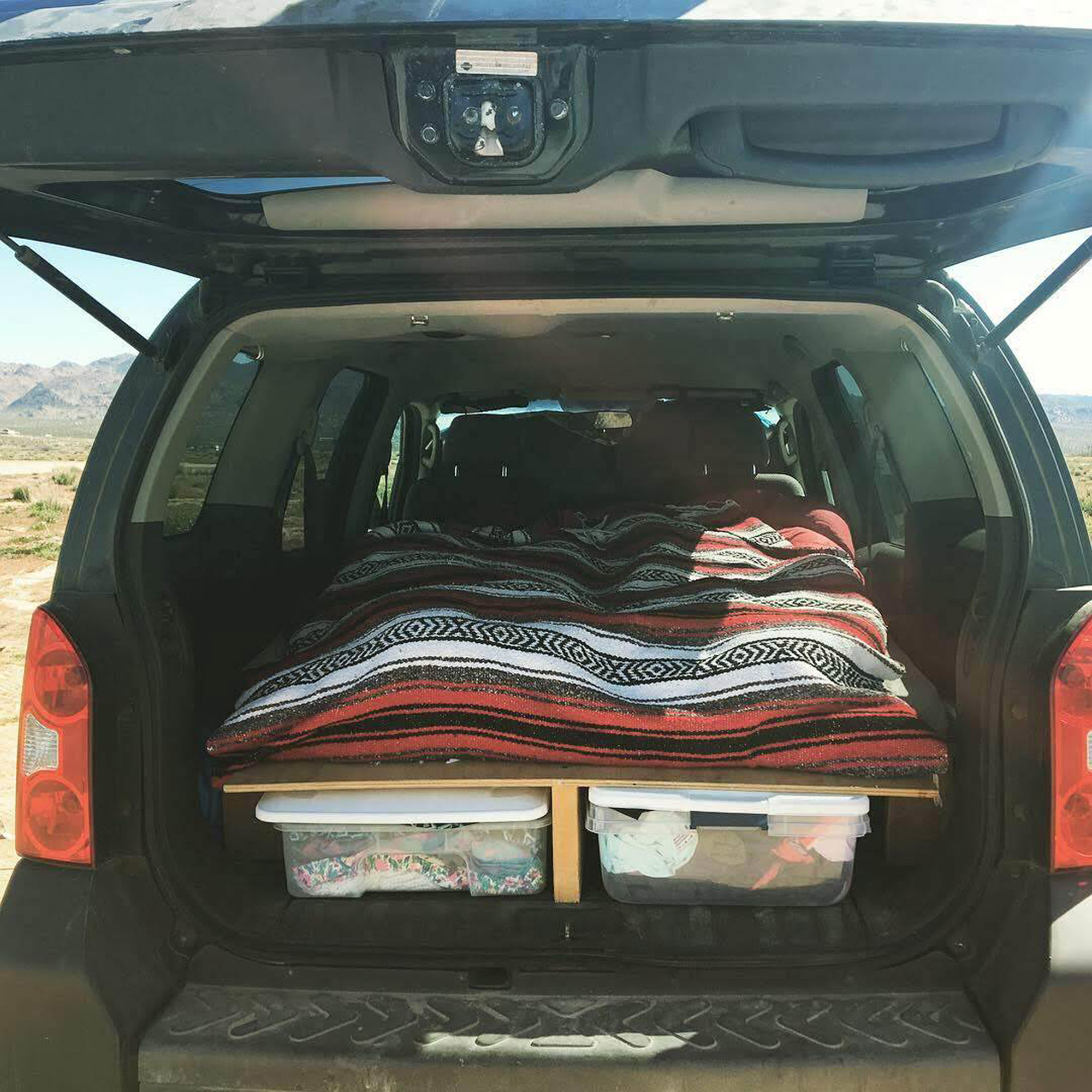
Sleep Well
To make long term travel comfortable, we built a custom sleeping platform in the back of our Xterra using scrap wood. The internet doesn’t sell mattresses in “Back of Xterra” sizes, so we cut a 3-inch mattress topper down to size, covering it with hand-sewn mattress cover, upcycling fabric from an old top sheet.
Our bedding ranges from 20 degree sleeping bags for cold weather to light blankets for warm weather. Year-round, we use stuffable pillow cases, like the Therm-a-Rest Stuff Sack Pillow.Most importantly, bedding needs to be compact and packable for storage purposes
If your car is too small to sleep in, consider something like the TepuiHyBox Rooftop Tent And Cargo Box, which offers protection from the elements and keeps you from sleeping on the ground. For others, sleeping in a traditional tent may suit your needs, just be sure to pack comfortable bedding.
Carla Francis
Carla is full-time road tripping North America’s trailheads with her husband in their muddy, retrofitted Xterra. After fulfilling her life goal of seeing an Organ Pipe Cactus, she’s back to her East Coast stomping grounds. @backcountrycookes is a collection of Carla and Brian’s lightly photoshopped travels.
Related Posts
April 5, 2024
Book Review: Arctic Traverse: A Thousand-Mile Summer of Trekking the Brooks Range by Michael Engelhard
Take a trip to the world’s northernmost…




